
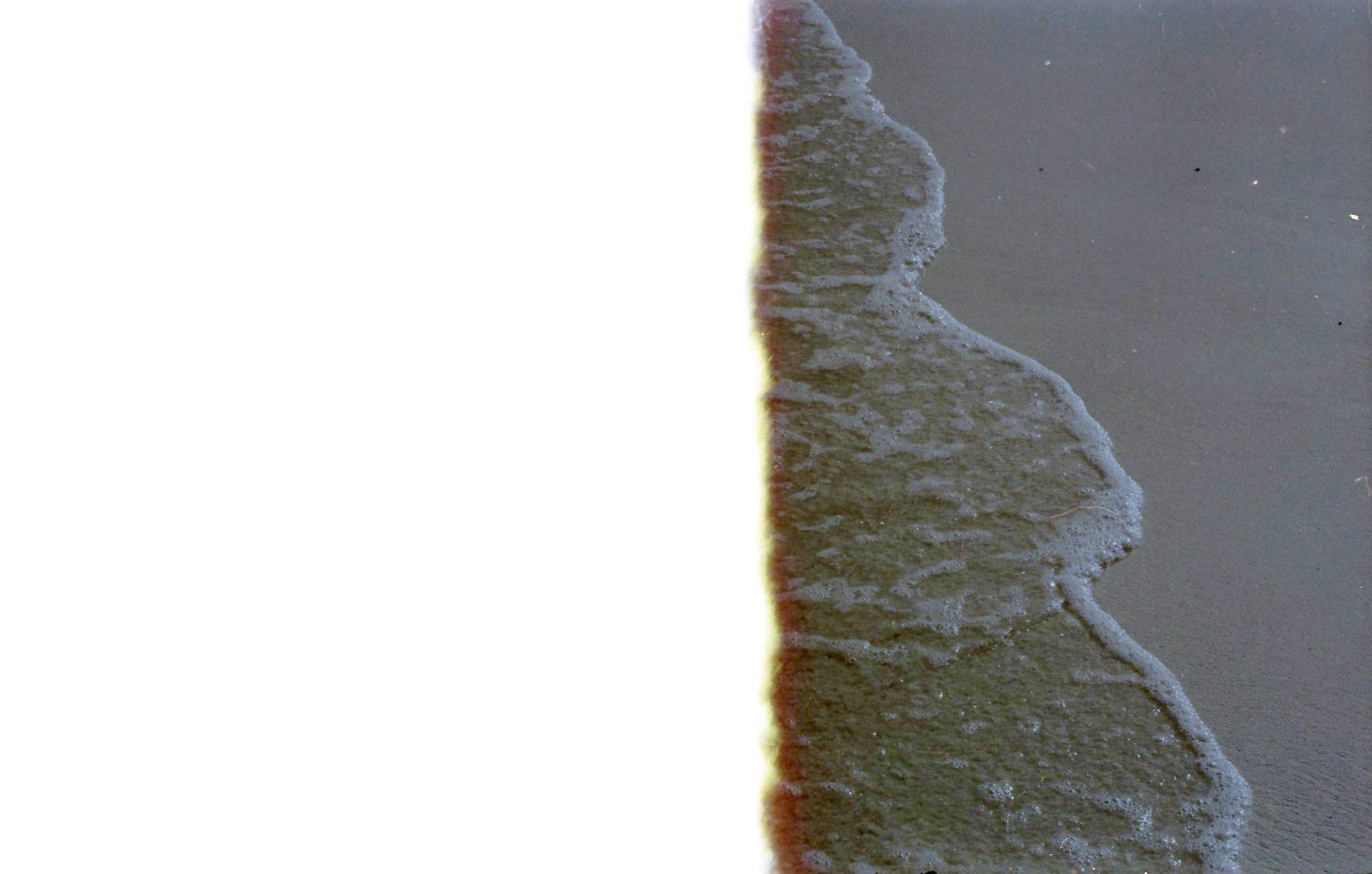
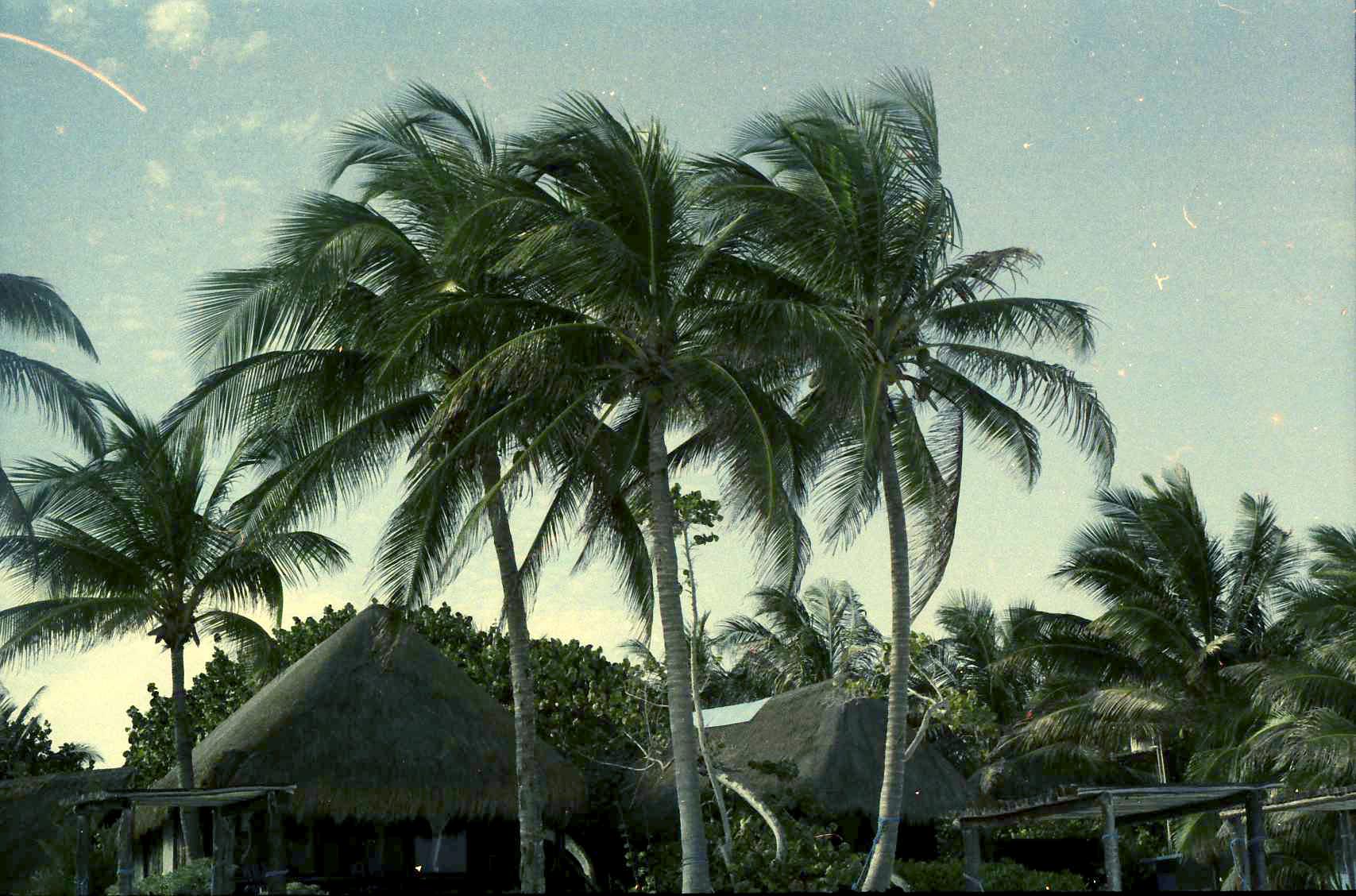

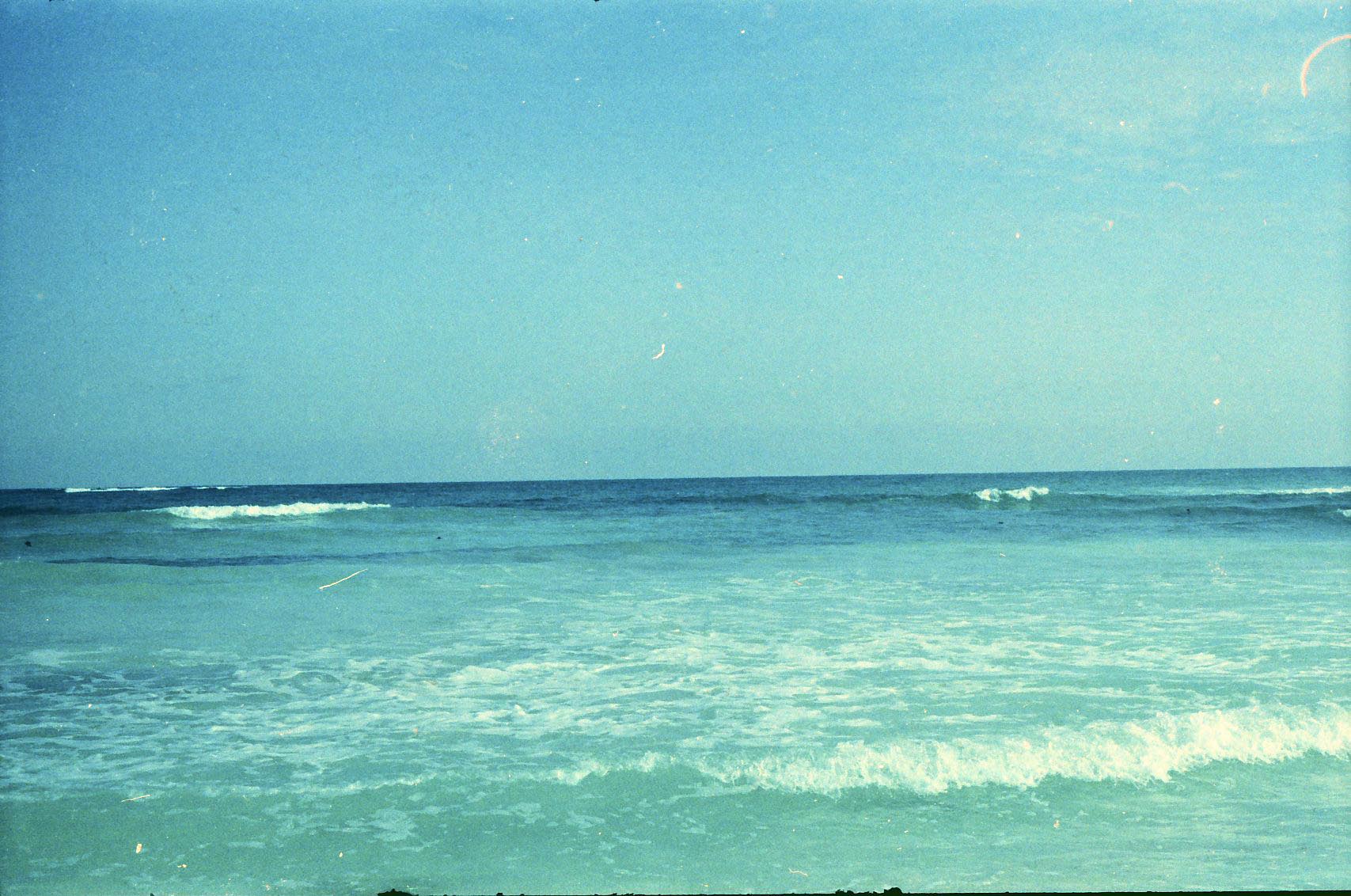
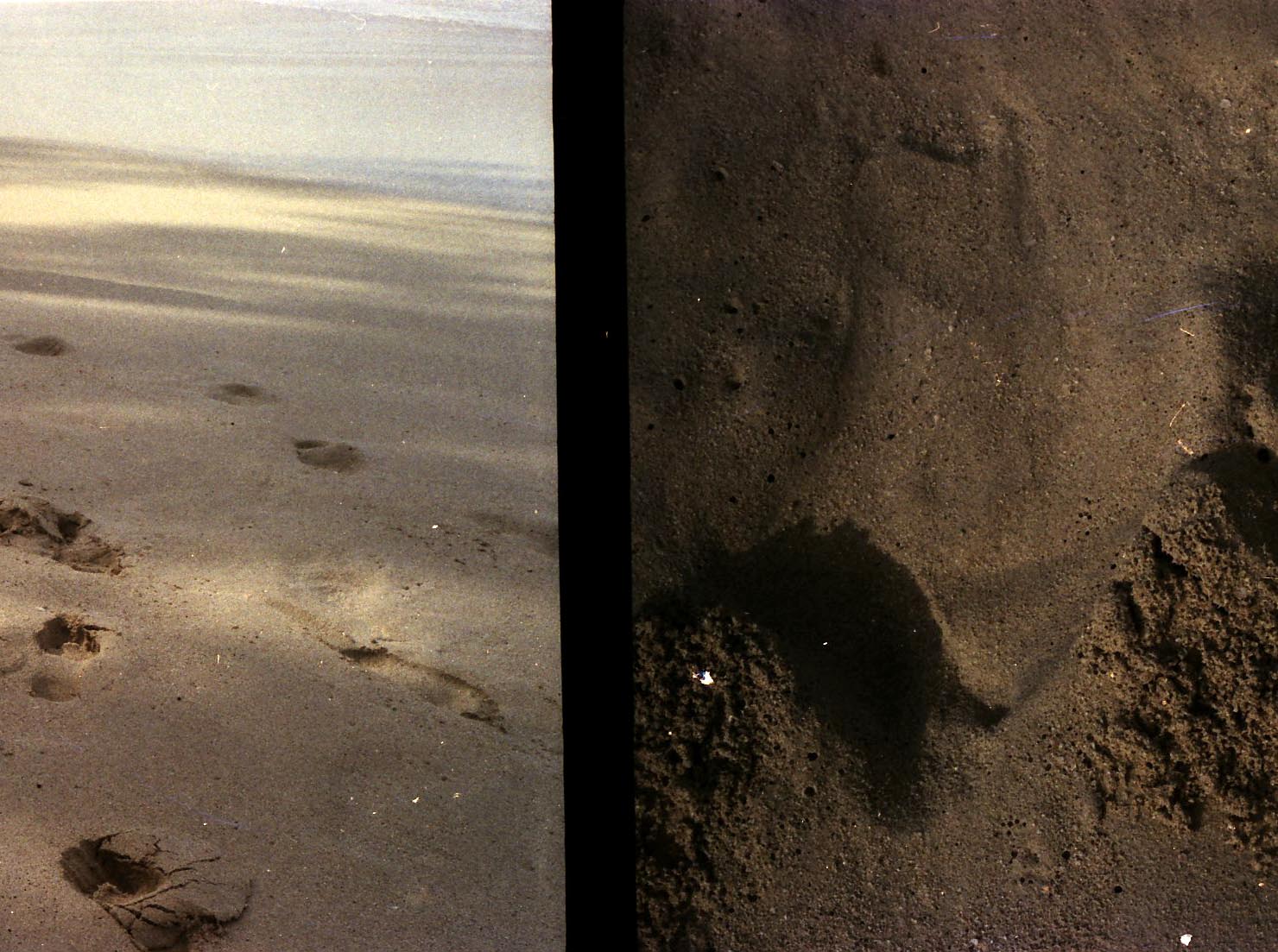





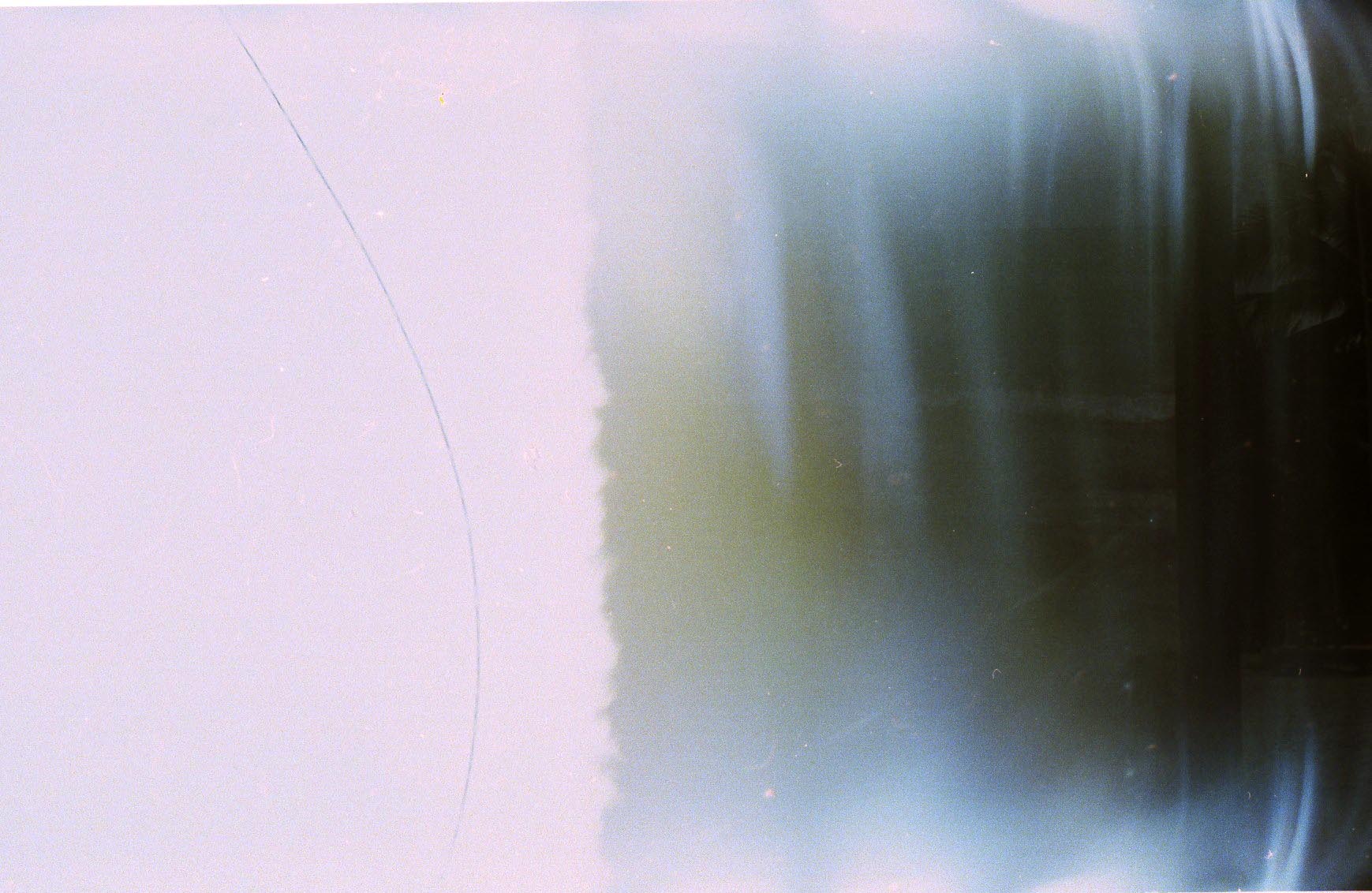
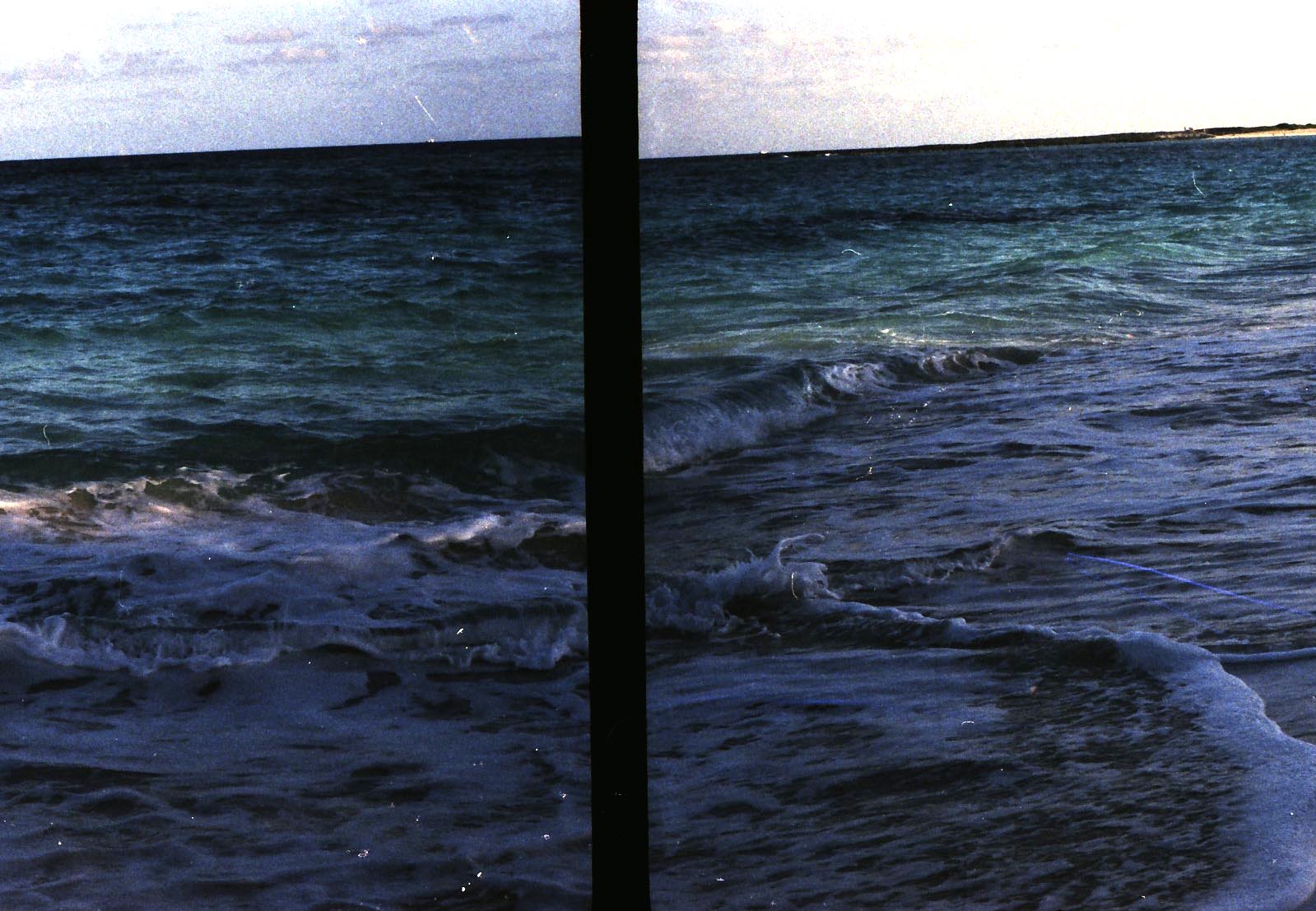


Photographs made at tourist destinations interrupted by in-camera actions forcing aspects of the surrounding landscape to directly and physically disrupt the image-making process upon a 35mm colour film.
Living within a post-colonial capitalist system in the Northern Hemisphere we are taught to commodify land and culture. To demonstrate our power via asserting our dominance over the land, to go and ‘gather’ place. Historically, one of travel photography’s primary and central functions has been to support this paradigm.
Psychologically too, before we travel, we ‘see’ the place we will travel to – our choice of where we will visit largely being determined by the images we pre-perceive and our fascination and compulsion towards those images. We journey to not only collapse the gap between ourselves and the anticipated place but to occupy and experience the image, and locate ourselves within it. On such pilgrimages there is a conjunction of landscape and desire as we travel to experience the pre-perceived, to stand by that pyramid, on that beach, in front of that Eiffel tower, with the photograph functioning as hard evidence of our arrival. We seek to make the internal image real. However, despite the success of reaching our destination, of experiencing, re-creating and gathering the anticipated image via photographs, a gap sits between us and that which we sought. Where do contemporary travel image-making practices sit outside of this paradigm of possession? Are they able to?
Using this potentially unresolveable gap as my motivation, at tourist destinations I made a series of crude, physical interventions to a standard roll of 35mm film. In efforts to overcome our unconscious training to just recreate the image as we have previously seen it, and thus “possess” it for ourselves, I instead exaggerated the actual experienced distance between my body and landscape (as I had just arrived in it) through a variety of instinctual actions, and rather than needing to re-create the pre-perceived image I sought, I emphasised the disrupted, disjointed reality I was experiencing, reducing the need to demonstrate my apparent integration through a coded set of pre-agreed images or signs.
My actual gestures included forcing elements such as sand, seaweed and seawater to interact directly and destructively with the film, marking it, chemically altering it; scratching the exposed frames with the very fronds of the palm I just photographed; directly exposing the film to the sun, and leaving bits of the environment on the negatives I’d just scanned.
Such traces did still photographically evidence my presence in the land, but via crude, ridiculous, abstract, disruptive and playful mark-making, versus a prescribed set of practices applied in a determined desire for dominance. Working with materials from site (rocks, stones, seawater, plant) allowed for chance and spontaneity to occur (between the haptic, the atmospheric, the landscape, the materials and the 35mm film) as opposed to the rigid rehearsed encounters with land assigned by colonialism and inherited by tourism, that of being told where to look, what to look at, where to stand, when to take photographs and when to leave.
Overall, I attempted to use action and process to encourage an authentic, spontaneous, symbiotic relationship with environment, revealing the imperfect and human truth of encountering an unknown land and the challenges of how to fully honour and integrate the experience. I was highly aware of the futility of my gestures, their simplicity and awkwardness so small and individual against the backdrop of grand empires and years of colonisation. However such contrasted experience only heightened the intensity and emphasised my own “her-ness” amongst a history of him. Placing details from the surrounding environment into the camera felt like putting sand into the eye of an official, authoritative gaze, reclaiming the lens and body of the camera as my own.
C-Type prints from 35mm colour negatives
36 x 50.8 x 60.9 cm / 20 x 24 inches
Each print in an edition of 5 + 2 AP
Paradise Island, Bahamas & Tulum, Mexico, 2016.